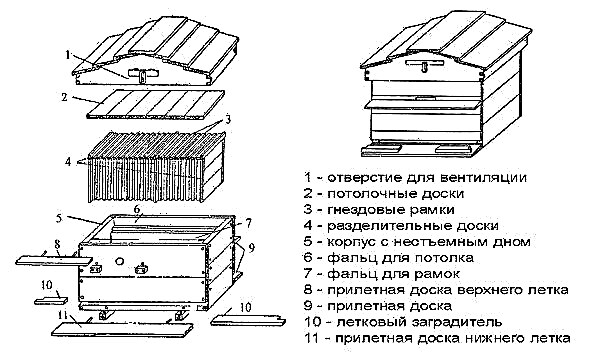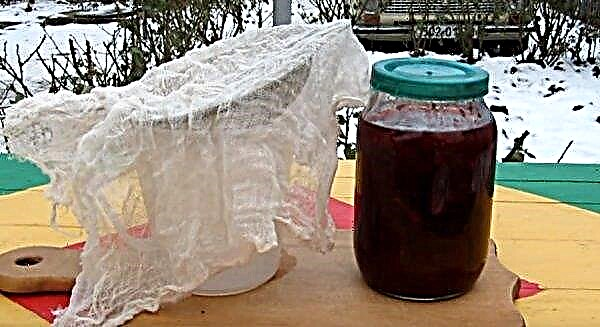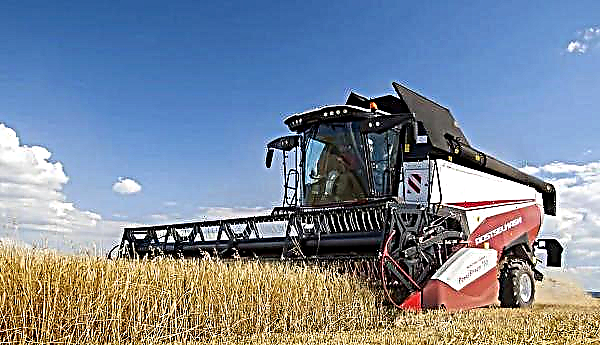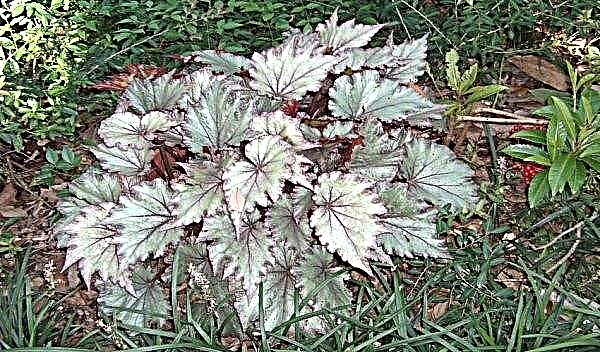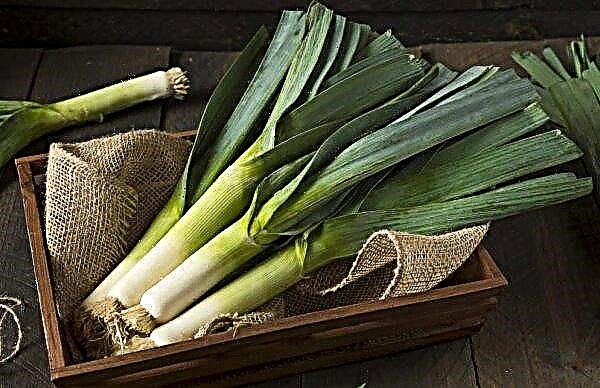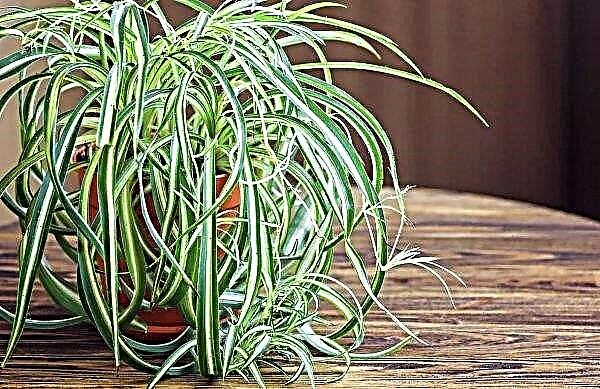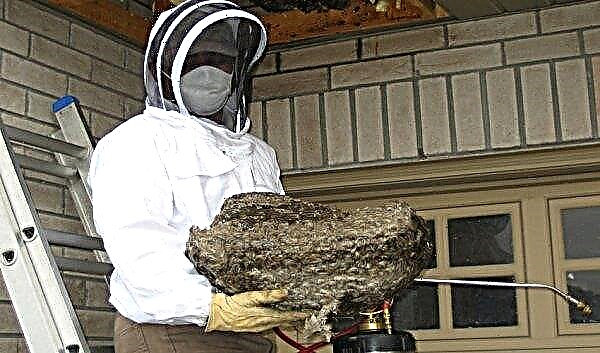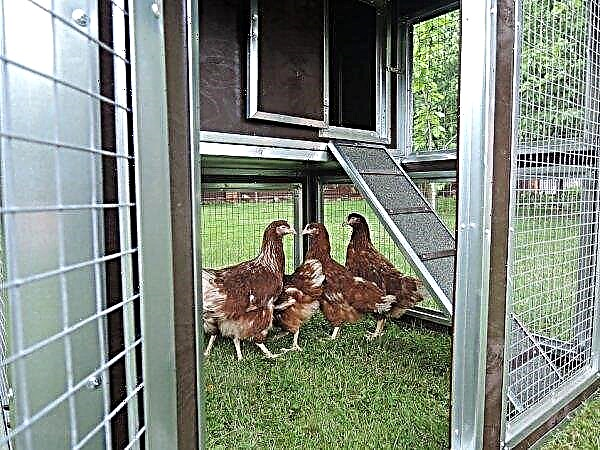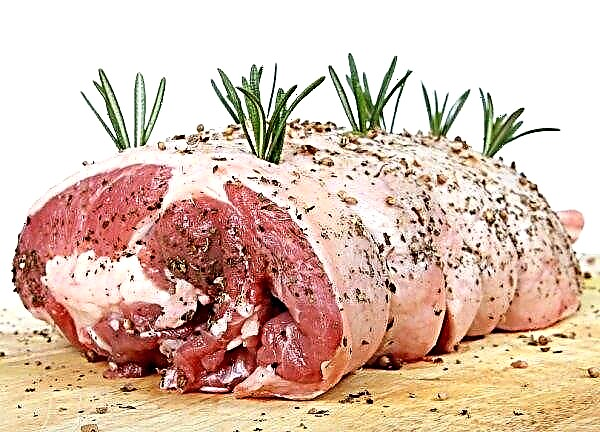Gooseberries have long been loved by many gardeners for their unpretentiousness in care, healthy and tasty berries, and resistance to any climatic conditions. In the world there are more than 1500 varieties of this plant. This diversity allows you to choose the right varietal material for planting in your garden plot. In this article, you can find information about the characteristics of the Laskovy variety and how to grow this plant in a personal plot.
Selection history
The gooseberry variety Laskovy was bred in the 20th century by breeder I.V. Popova at the All-Russian Institute of Horticulture and Nursery. The biological material was taken from varieties Ottawa 274 and Pink 2. A new kind of gooseberry was obtained with slightly prickly shoots, which is why it got such a sonorous name.
Did you know? Gooseberries contain P-active compounds (anthocyanins and leucanthocyanins) that help normalize blood pressure and strengthen the walls of blood vessels.
Description
This variety has the following characteristics:
- medium-sized, multi-stemmed, compact shrub up to 1.5 m high;
- young shoots are green, and fruitful ones are light brown;
- branches covered with sparse, single, short spikes;
- leaves - medium (size), five-lobed, light green, with a glossy tint;
- flowers are small, pale pink;
- the berries are of medium size, weighing 4-8 g, roundish, bright red in color, have a sweet taste with a delicate acidity, the flesh is jelly-like, the skin is dense with a wax coating.
Advantages and disadvantages
- The gooseberry varieties Laskovy have the following advantages:
- resistant to powdery mildew disease;
- compact, occupies a small area;
- single thorns are located on the basal part of the shoots;
- berries contain micro and macro elements, sugars, folic acid, provitamin A, vitamins of groups B, C, E, P;
- the fruits have a dense skin, are well transported, and are also used to any degree of maturity;
- leaves are used in recipes of traditional medicine.
- But the variety has some disadvantages, namely:
- poorly tolerates drafts and high humidity of the soil and air;
- berries have a pronounced sourness, so they should be used with caution in people suffering from gastrointestinal diseases.
Drought resistance, frost resistance
Among the many advantages that gooseberries possess, its endurance to high and low temperatures, namely:
- the bush is resistant to drought;
- has high frost resistance, consisting in the fact that the root system is able to withstand temperature drops to –20 ° C, and shoots to –30 ° C;
- but if frosts lower than –20 ° С are set in the region, and the snow cover is less than 10 cm, there is a chance of freezing of the shoots and roots, therefore it is recommended to warm the plants.

Productivity and fruiting
Another feature of Laskovy is its high yield, which is influenced by the following criteria:
- self-pollinated shrub (does not need pollinators), but if several bushes of other gooseberry varieties with the same flowering periods grow nearby, then the yield increases significantly;
- gooseberries begin to bear fruit in the third year after planting and maintains full productivity up to 10-12 years;
- with good care from one bush, you can collect up to 7 kg of fruit per season;
- the number of berries depends on the condition of the shrub - in a well-branched plant, shoots are stronger, giving many large and ripe fruits.
Landing
The choice of a healthy seedling, competent planting and proper organization of the planting site - all this contributes to the rapid growth and development of culture.
Did you know? The variety London has the largest gooseberries, the weight of one fruit can reach 58 g.
The timing
Planting seedlings is best done in the fall, before the first frost. At this time, the root system is well established. You can plant gooseberries in early spring, immediately after the snow cover has melted (before the onset of the active vegetative period).
Choosing the right place
When choosing a territory for planting gooseberries, you need to pay attention to such factors:
- organize a landing place, protected from drafts and strong winds;
- the soil should be well-drained, with moderate humidity, and with the occurrence of groundwater not higher than 1.5 m from the surface of the ridge, since when the water stagnates, the roots of the bush rot;
- the place should be sunny;
- the plant can grow on soils with different structure, but prefers loam.

Selection and preparation of planting material
Seedlings are best purchased from trusted suppliers who can (upon your request) provide the necessary certificates confirming the variety, description and photo of an adult plant.
Important! If you purchased a plant with an open root system (ACS), you must take all measures to prevent drying of the roots (they can be wrapped with a damp cloth and placed in a plastic bag).
What should I look for when buying and what preparatory manipulations should be made before landing:
- choose a seedling one-year or two-year, with 3-5 shoots and a height of at least 30 cm;
- the root system should be well developed, with the length of the root processes of at least 15 cm, without dry and broken parts;
- kidneys are brown, elastic to the touch;
- on the roots and shoots there should not be any cracks, swelling and spots of brown color. If any, the plant is infected with diseases and pests;
- Before planting, it is necessary to remove all dried and damaged twigs and roots;
- soak the rhizome for a day in a solution of sodium humate (extract from manure, silt, peat).
Landing pattern
When planting shrubs, you must adhere to the following scheme:
- Dig a hole 50 cm in diameter and about 40–50 cm deep. The distance between the bushes is 1.5–2 m and between the rows 2.5–3 m.
- Pour fertile soil with overripe manure and compost (about 10 kg) to the bottom of the pit.
- Add superphosphate (50 g), wood ash (250-300 g).
- Lower the sapling into the hole, straighten the roots (if the root system is open), cover it with earth, pour plenty of water (10 l of water);
- For the best subsequent formation of the bush, shoots are recommended to cut to 6-8 buds.

Features of seasonal care
Compliance with the rules for caring for the bush allows you to increase its lifespan. To do this, it is necessary to loosen and weed the ground, fertilize and water the shrub, carry out maintenance work, establish supports and form a crown.
Soil care
During the dry season, gooseberries must be watered. The interval between watering is two to three days. After irrigation, a crust may form on the soil, which prevents the evaporation of moisture and the access of oxygen to the roots (they are at a depth of 10 to 40 cm and too high humidity is harmful to them). Therefore, the soil needs to be loosened, as well as weeds to be removed along with the roots.
Preventative treatment
To protect gooseberries from pests, infections and get a good harvest, it is necessary to carry out preventive work:
- cut off damaged branches;
- weed grass around the bush;
- to fertilize;
- inspect the bush for pests and diseases;
- timely spray with medicinal products.
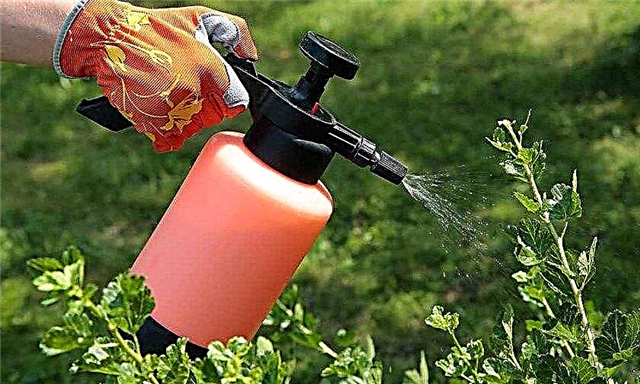
Top dressing
Plant nutrition can be carried out throughout the season in several stages, using both chemical and organic fertilizers.
- Potassium sulfate (20–25 g) and superphosphate (30–40 g) make in the spring after thawing snow by dispersion under the bush, after which the soil needs to be dug up. This technique is repeated during the ripening of the berries. If the preparations were added when planting a seedling, then they are used in the third year.
- Organic fertilizer (manure, peat, compost) is diluted with water in a ratio of 1: 8 and the solution is poured to the base of the gooseberry bush. For one plant, one bucket of substance is enough. Organic dressing is carried out in several stages: during flowering and fruit setting, during the ripening period of the berries, as well as in autumn - before preparing the bush for winter.
Support
Fruitful shoots have a good branching and densely dotted with fruits. When the period of mass ripening begins, the weight of the berries increases, the branches can lean low and come into contact with the ground, which increases the risk of fungal diseases and loss of yield. Therefore, you need to make a support of wood or metal. This design is easy to do independently, install it before the fruit ripens, and best of all - in the early spring.
Pruning
During the season, gooseberries grow a lot of young shoots, and over the course of a few years, the shrub turns into thickets that poorly transmit light. Because of this, a decrease in productivity occurs, the fruits become small and tasteless, diseases develop, pests multiply.
Important! The vegetative period in gooseberries begins very early, as soon as the snow melts, therefore it is better to form gooseberry bushes in the fall.
Therefore, every autumn it is necessary to form a bush in this way:
- cut all dry, curved and damaged shoots under the root. Sections of cuts can be treated with garden varieties;
- remove completely old fruiting branches that are 6-7 years old;
- shorten young fruitful trunks by one quarter;
- the bush should consist of 10-15 shoots of different ages.

Breeding methods
One of the simplest methods of breeding gooseberries is the method of reproduction by taps. You must choose the two-year-old shoots that grow closest to the ground. Bend them to a groove dug in the soil (5-8 cm deep), fasten them with pegs to the ground, fill with soil and water from time to time. After the new processes reach a height of 10-15 cm, they are spudded. Superphosphate can be added to the soil near the shoots - 30 g per 1 m². When the sprouts give a good growth, the tops are slightly shortened.
Diseases and Pests
A feature of this gooseberry variety is its resistance to powdery mildew.
Did you know? In English, gooseberry sounds like “Goose berry”, in German - “Christ's turn”, in Belarusian - “agrest”, and in Russia during the reign of Peter I, the berry was called the "northern grape".
But still, the plant can be exposed to pests and diseases, such as:
- Anthracnose - a fungal infection that affects the entire terrestrial part of the bush. It appears in the form of brown spots on the plant. The infected leaves dry out and fall off, and the berries rot. The high humidity and temperature above + 22 ° C contribute to the development of this disease. You can fight the disease with copper sulfate and 1% Bordeaux fluid.

- Septoria or white spotting promotes early drying of leaves and their falling. The disease reduces the yield of the bush by at least half. A distinctive feature is the appearance of white spots with black dots in the center on the diseased areas of the plant. The treatment of the bushes consists in spraying with solutions of Chorus, Medex, 1% Bordeaux mixture.

- Rust - The most common fungal disease. Appears on the leaves in the form of orange swollen spots, which since time merge. Berries are also affected, they become one-sided and curved, lose their taste and crumble. At the first manifestations of the disease, you need to cut off the yellowed foliage and treat the bushes with such preparations as “Kaptan”, “Tsiram”.
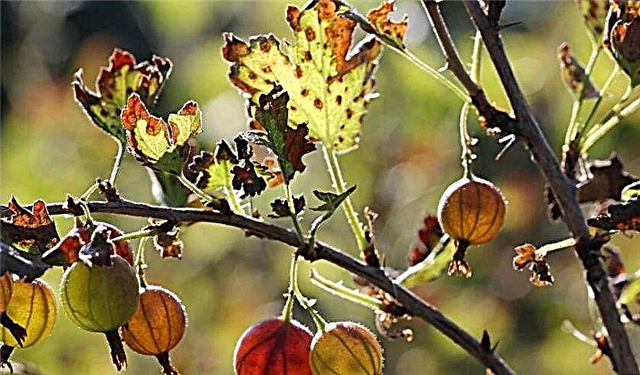
- Aphid - small insects (up to 2 mm), have long strong proboscis, which pierce the leaves and shoot surface. They live in colonies, feed on plant sap, thereby causing enormous damage to the plant. Eggs are laid on leaves, and winter in the roots and stems of the bush. They are carriers of infections. You can deal with these pests with the help of “Aktara”, “Fitoverm”, “Iskra”, “Tanrek” preparations.
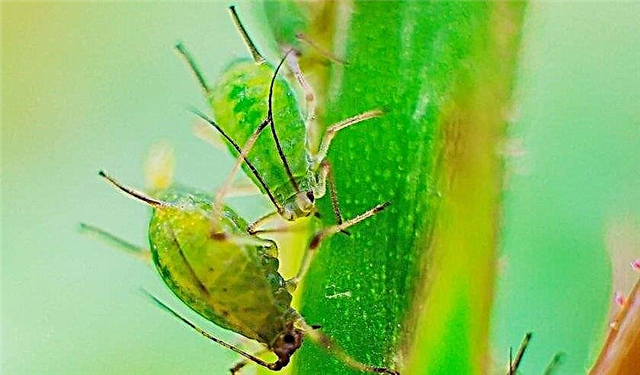
Winter preparations
Preparations for the shrub for winter are held in late autumn, before the first frosts, and they consist of such actions:
- remove fallen leaves from under the bush;
- remove weeds from the root zone along with the roots;
- cut broken and dry branches;
- digging the ground around the plant;
- remove the support;
- cover the root system with humus (a layer of more than 10 cm);
- bend the shoots to the ground, press them with pegs or staples, cover with material (burlap, agrofibre), sprinkle with earth.
Video: gooseberry care and preparation for winter
Harvesting and storage
The ripening period of this variety comes closer to mid-summer (late June - early July).
Collecting and preserving the harvest, summer residents advise:
- pluck fruits from dry weather;
- put the berries in a clean, shallow container;
- to store fresh fruits in a cool place or refrigerator at a temperature of + 5 ° C for no more than 10-12 days;
- berries can be frozen or prepared preparations for the winter (jam, jam, liquors, wine).
Variety Laskovy received excellent reviews from many gardeners. When growing, you need to make very little effort and then the gooseberry will “delight” you with a tasty and high-quality harvest of bright, fragrant fruits.





